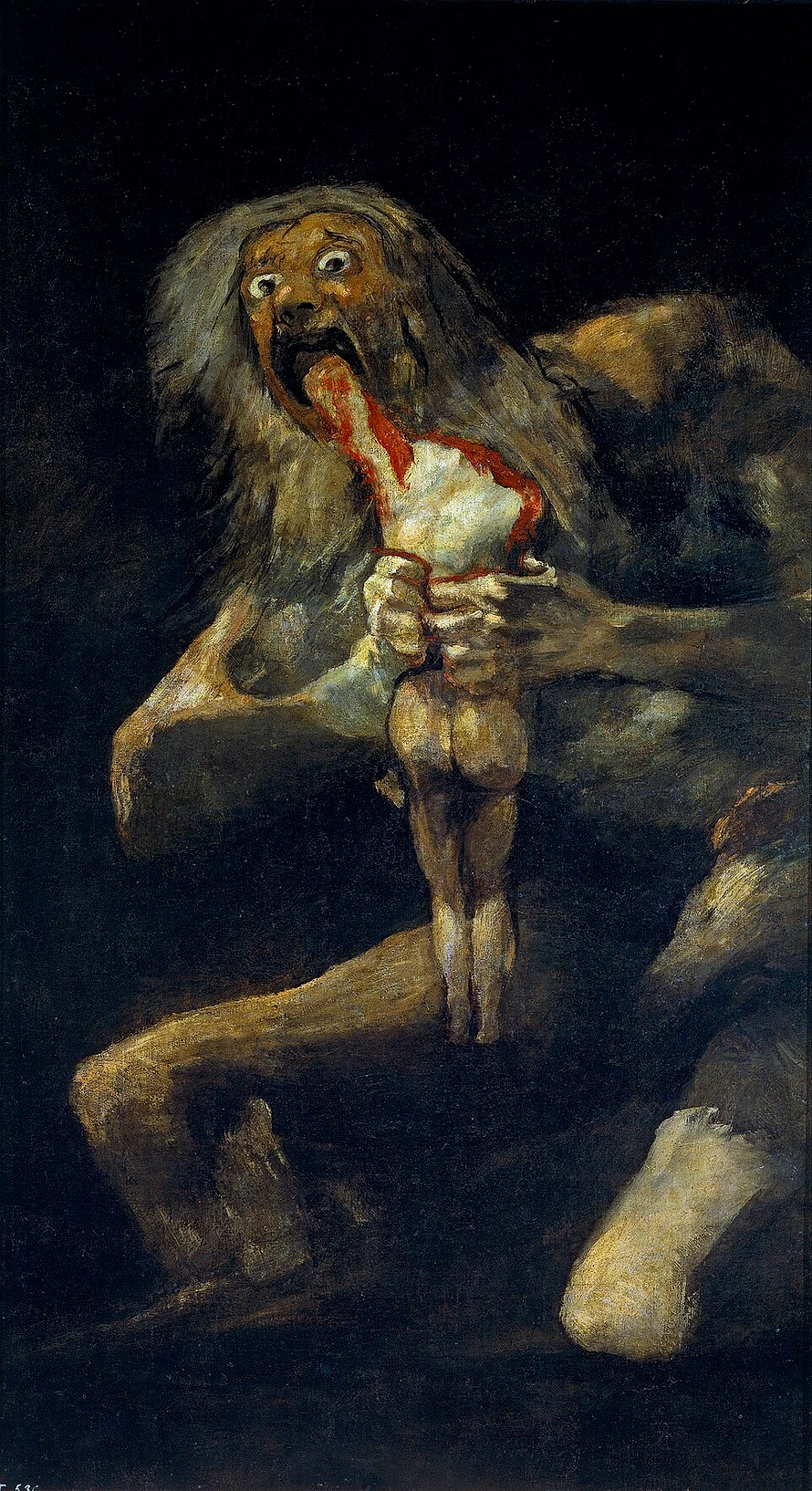The Horror and Genius Behind Goya’s “Saturn Devouring His Son”
Explore the terrifying masterpiece Saturn Devouring His Son by Francisco Goya. Discover its meaning, mythological origins, and how it reflects the dark depths of the human psyche.
The Darkest Painting of the Human Soul?
Francisco Goya’s Saturn Devouring His Son is one of the most chilling images in Western art history. Painted between 1819 and 1823, this nightmarish vision depicts the Roman god Saturn (the Greek Cronus) in the act of consuming one of his own children—his eyes wide with madness, his hands clawing at flesh, and his mouth dripping with blood.
But this isn’t just mythology. It’s a window into the tortured mind of a genius—and into the dark political and personal realities of Goya’s time.
The Myth Behind the Painting
In Roman mythology, Saturn feared a prophecy that one of his children would overthrow him. To prevent this, he devoured each child as they were born. Eventually, his wife Ops (Rhea in Greek mythology) tricked him by hiding one son—Jupiter (Zeus)—who would grow up to fulfill the prophecy.
Artists had painted this story before—most notably Rubens—but Goya’s version was different. It was raw. It was savage. It was deeply personal.
A Painting Never Meant to Be Seen
Saturn Devouring His Son was one of Goya’s Black Paintings—a series of 14 murals he painted directly onto the walls of his home, the "Quinta del Sordo" (House of the Deaf Man). These works were never commissioned, never exhibited, and possibly never intended to be viewed by others. They were a private outpouring of fear, despair, and existential dread.
The original mural was transferred to canvas after Goya’s death and now hangs in the Museo del Prado in Madrid.
Goya’s State of Mind
By the time Goya painted Saturn, he had lived through war, illness, exile, and the collapse of the Spanish monarchy. He was deaf, disillusioned, and isolated. The Saturn figure—with wild hair, bulging eyes, and feral desperation—may reflect Goya’s own inner torment or his view of a society devouring itself.
Some art historians also interpret the painting as a metaphor for political tyranny, a fatherland destroying its future.
Legacy and Interpretation
Saturn Devouring His Son continues to captivate and disturb viewers more than 200 years later. It’s cited as a precursor to expressionism, surrealism, and even horror film aesthetics. Unlike classical depictions of gods, Goya's Saturn is not majestic—he’s monstrous.
This haunting work remains a powerful reminder that the darkest truths are often hidden not in myth, but in ourselves.
Get 'Saturn Devouring His Son' Phone Case Here

